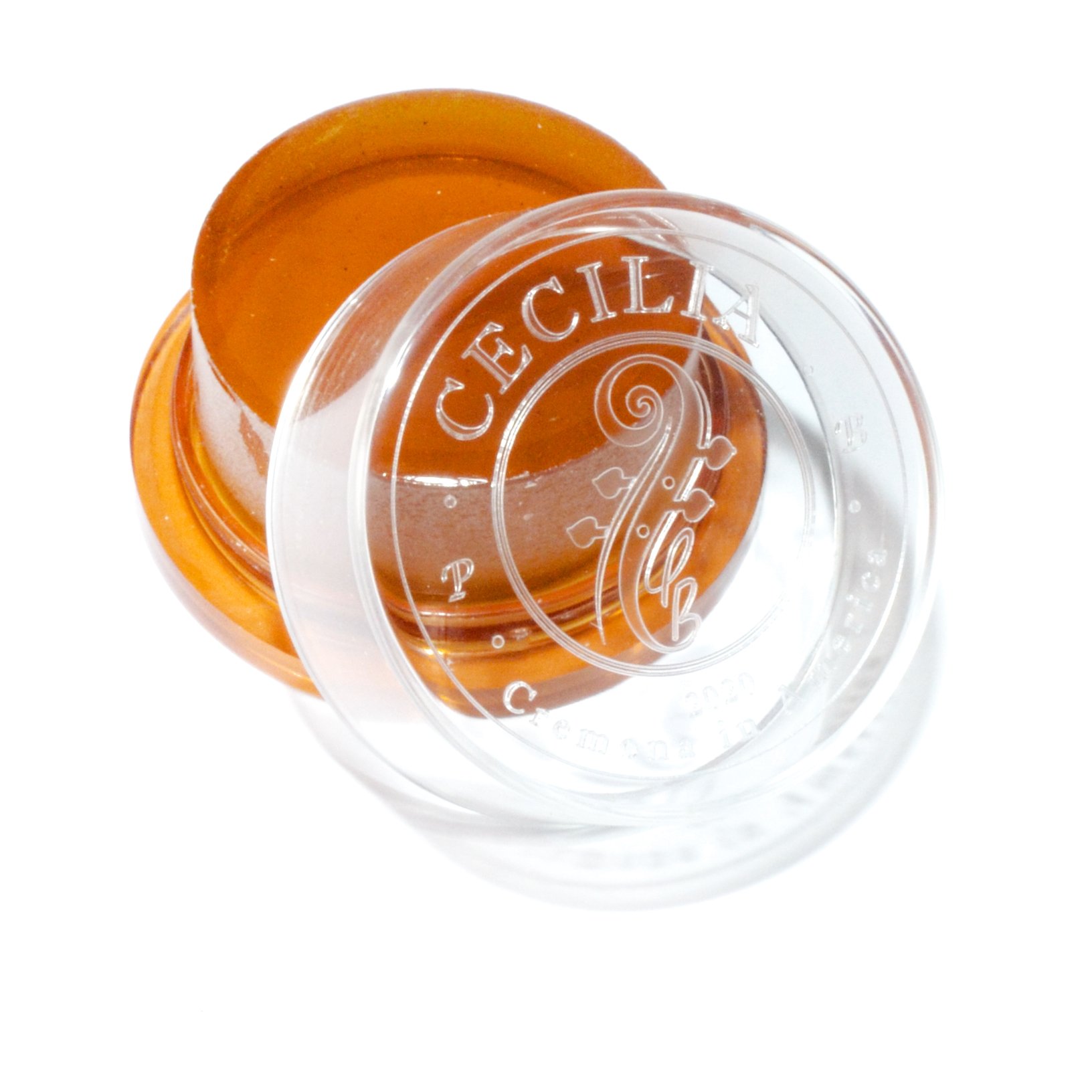CECILIA Rosin — choosing, applying, and caring for rosin (violin · viola · cello)
From history and chemistry to climate-based selection and application tips.




What rosin does (and why the recipe matters)
Rosin (also called colophony) is a refined pine resin that gives bow hair the grip needed to set strings vibrating. Different blends change the feel of the bow on the string and the balance of attack, sustain, color, and surface noise. The right rosin can make a bow feel more stable, start each bow stroke more cleanly, and will give different tonal characteristics.
- Most players: start with a balanced, low-dust blend like CECILIA Signature.
- Solo / bright halls: add bite and projection with CECILIA Solo (use sparingly).
- Lyrical / chamber: choose A Piacere for a smoother, blended pull.
- Two-in-one: Sanctus gives smooth outer ring + grippier centre for power on demand.
Application & Care
Prime the hair
On a fresh rehair, apply 5-10 even strokes from frog to tip. Use a rosin speader for even application. Check, and if more rosin is needed, add in small increments. Then maintain with 3–6 light passes as needed. CECILIA is concentrated — less is more.
Clean and check
After playing, wipe strings and stick with a dry, lint-free cloth. Avoid solvents near varnish. If hair is glazed or contaminated, rehair before evaluating rosin.
Match to climate
- Warm/humid room: slightly harder/cleaner blends help reduce stickiness.
- Cool/dry room: slightly softer/grippier blends can help starts at low dynamics.
Rosin (colophony) can cause skin sensitivity in some people. Minimise dust, wash hands after heavy handling, and follow the SDS on our CECILIA pages. Store rosin ideally somewhere cool and dry.
Compare popular options
| Formula | Best for | Tone / feel | Notes |
|---|---|---|---|
| CECILIA Signature | All-round teaching & section work | Stable contact, rich core, low surface noise | Great for most instruments and strings. |
| CECILIA Solo | Solo repertoire, bright halls | Immediate bite and focus | Apply lightly to avoid scratch; blends well with Signature. |
| CECILIA A Piacere | Lyrical, blended chamber sound | Silky less focused sound, rounder attack | Inspired by Tartini “Green”. |
| CECILIA Sanctus | Versatile (smooth + power on demand) | Outer ring = smooth focus; centre = extra grip | Two complementary responses in one cake. |
A short history of rosin for bowed strings
The word colophony comes from the ancient Ionian city of Colophon, famed for its pine resins. For centuries, makers have refined pine resins to produce a hard, glassy material that grips bow hair to the string. As European bowed instruments emerged and spread (medieval to Renaissance), rosin became essential to consistent tone production — today it’s as fundamental as strings or a bridge.
Modern rosins are carefully filtered and blended to balance friction, dust, and stability. Specialist makers create exceptional blends which have unique formulas and different levels of hardness — the reason today’s premium rosins can give a result that is very different to cheaper generic blends.
CECILIA: workshop craft to modern collection
CECILIA Rosin is crafted by violinist-maker Peter Bahng at Cremona in America. The line evolved from earlier Tartini and Andrea rosins; in 2020 the brand name changed to CECILIA while formulas remained consistent. The current range — Signature, Solo, A Piacere, Sanctus and dedicated Bass — focuses on low dust, long life, and refined grip with hand-poured consistency.
FAQs
How often should players reapply?
Every 2–6 hours of playing is typical. High-pressure solo work needs more; quiet chamber/orchestral work needs less.
How much is “enough”?
On a maintained bow, start with 3–6 light strokes. If the bow slips at the frog or on soft attacks, add one or two passes.
Can you mix rosins?
Many players layer lightly within a family (e.g., Signature + a touch of Solo). If swapping to a very different formula, clean/rehair first.
Shop CECILIA Rosin Apply to become a stockist Questions? Contact us · +44 333 939 0101
